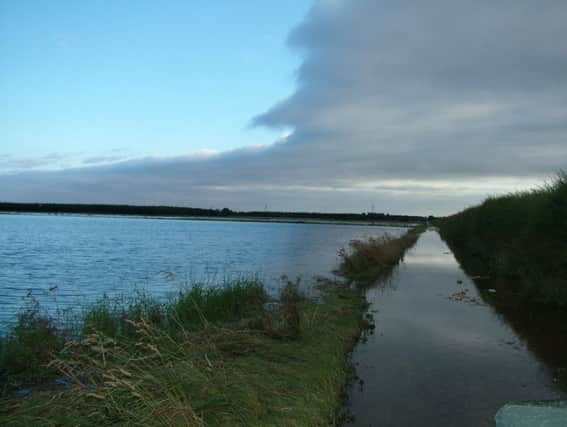Merit in local plans to beat flooding


The severity of the 2007 floods that caused destruction across East Yorkshire can be crudely measured in raw statistics: 15,000 homes and properties were flooded and 24,000 acres of farmland.
It took some people three years to move back into their damaged homes. For Martin, his total losses added up to around £200,000.
Advertisement
Hide AdAdvertisement
Hide AdAt his farm in Baswick Steer, he relies on water running off his land into a drain which is routed in parallel with the River Hull and which in turn sees water pumped into the Humber, but it is a system that proved incapable of handling a major flooding incident.
Acres of potato crops were ruined and that was the end of a crop that had served as the main source of income on Martin’s farm for years. At a loss, he took a chance and went from growing just a small quantity of hemp which he had supplied to processors, to establishing it as his principle crop over 500 acres.
Adapting his business wasn’t easy. Two hemp processors he supplied went bust, leaving him with two years of the crop in stores but with no one to process it. So, he invested in equipment to process the crop himself and now he directly supplies companies that need the material for industrial purposes.
Reflecting on the last 10 years, Martin said: “It’s changed our farm completely. We have always had faith in the hemp crop but it’s been difficult financially with lots of ups and downs – it’s been 10 years of hard work.”
Advertisement
Hide AdAdvertisement
Hide AdIt hasn’t just been Martin’s business that has changed. The whole approach to managing flood risk along the River Hull and the wider catchment area has also been revised.
A fierce backlash from landowners saw the Environment Agency abandon a plan that would have seen 3,500 acres of farmland in the upper Hull catchment area, including Martin’s, left to flood without any way of draining it effectively afterwards. The idea, the agency contested, was to focus flood defence work down river in urban areas.
But farmers like Martin argued that continuing to ignore the maintenance of the river higher in the catchment area was hindering the drainage of water from land, thus swelling river levels higher. The Environment Agency bowed to pressure and worked with East Riding of Yorkshire Council, along with Yorkshire Water, the Beverley and Holderness Internal Drainage Board (IDB) and Hull Council, to devise what became the River Hull Integrated Catchment Strategy – a plan that was finally agreed in July 2015.
Its priorities include the ongoing removal of sunken boats from the river and a programme of dredging.
Advertisement
Hide AdAdvertisement
Hide AdThe National Farmers’ Union has this week launched its new Flood Manifesto that calls for such local joint-working to be replicated elsewhere.
Martin, deputy chairman of the Beverley and Holderness IDB, believes there is a lot of work ahead if the River Hull is to cope with the sort of deluge that burst its banks in 2007, but he’s confident the local partnership is on the right track.
“We have got this local decision-making process which has worked very well and we have a strategy in place. It’s just the implementation of it now and we know it’s a long-term thing and that money is tight, but the costs of not doing this work are horrendous.
“One of the problems with the Government’s current approach to flooding is that there is too much emphasis put on capital projects and not enough on maintenance.
“If the maintenance of the River Hull catchment had been kept up by the Environment Agency, I think we would have been in a much better position in 2007.”